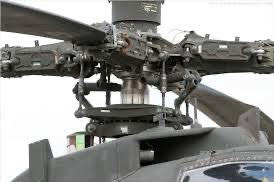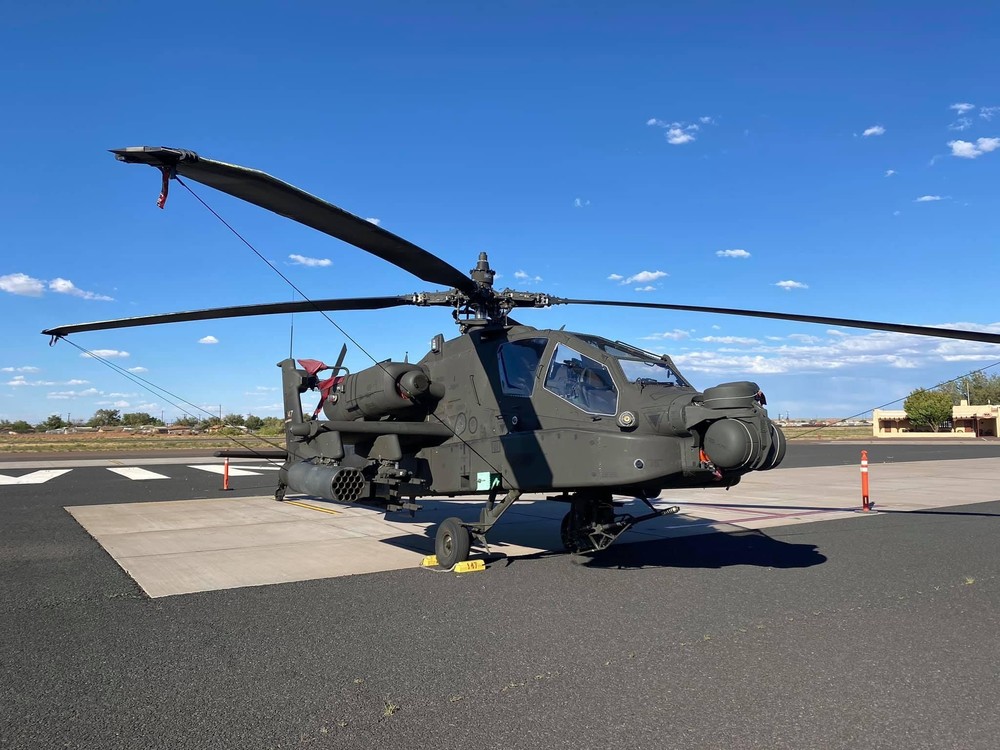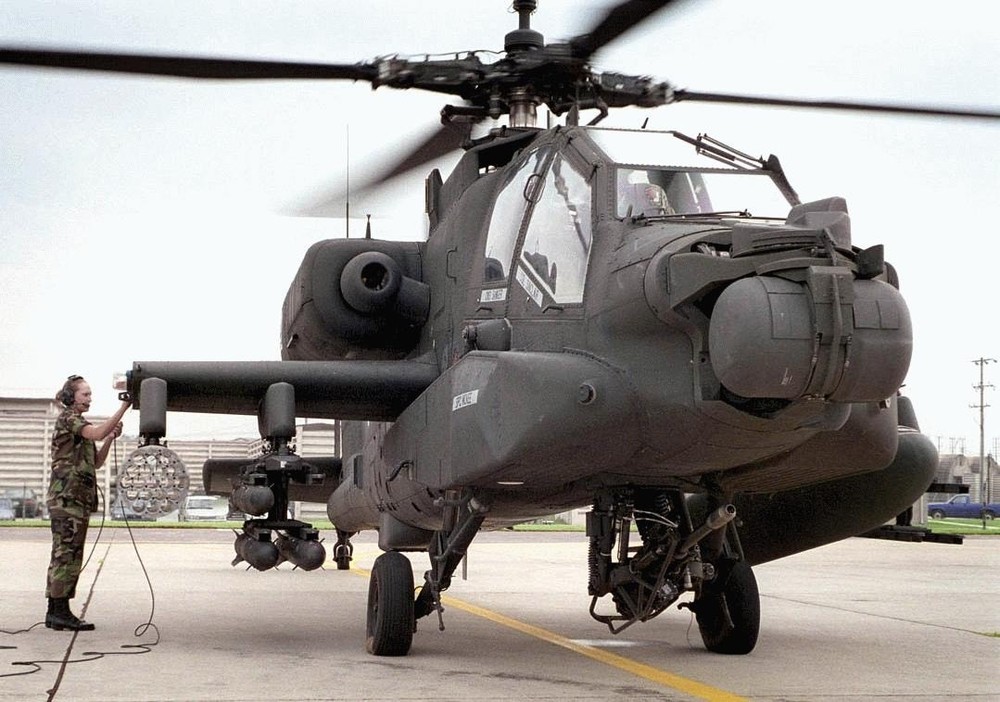

ApacheDoctor
Members-
Posts
61 -
Joined
-
Last visited
-
gunmetal73 started following ApacheDoctor
-
It’s the same airframe. Only difference is the installation of a few parts, a few plugs, and boom…FCR is installed.
-
Yea…those that worked on em know what those are.
-

Apache AH-64D Flight Characteristics / FM - what could I expect?
ApacheDoctor replied to Dangerzone's topic in DCS: AH-64D
The most lawyer answer ever-it depends. The Apache is a heavy monster. Empty, she sits around the 18000 lbs mark. Add fuel, bullets, missiles, and rockets, you’re going to be reaching the max performance capability of this beast relatively quickly. Go with a standard late OEF load out, which was remove the inboard pylons, a Robbi tank (more gas instead of ammo), 300 rounds of boom boom, rockets on one station and 2 114s on the other, and now you have something that will sit right in the middle of the performance envelope. Helicopters don’t do well in the mountains… Dead mans corner comes to mind same way that coffin corner does for high altitude performance in jets. Add density altitude into the mix, so think some of the potential missions into the Caucuses, and you are going to be in trouble. Sea level stuff such as Syria and the lower coastal areas of the maps, this conversation is null and avoid. The Flight model will depend on what you decide to put on it. There is also ITAR concerns too, so don’t expect a perfect match on the whole book answer. -
Woobah loobah boom boom
-
Most of the time it was flown without it for capability wise. The China Hat (dero) unit remained. But it was a weight savings measure.
-
Any chance y all are going to throw in a finicky maintenance module with this one? I know you guys aim for fidelity and realism. Some suggestions for you: 1. Random rotor over speed for no apparent reason but an MSPU or EDEC swap will fix it. 2. S39 check that clears fault codes 3. Side loader chute jam 4. Random cannon jams every 10-15 shots 5. One blade that just doesn’t track right every so often, for no apparent reason 6. My personal favorite: red x the bird because the fire extinguisher hasn’t been hefted in the allotted time. Come on maintainers, lets hear the other funnies or ridiculous gripes you’ve had with this wonderful defiance of laws of physics.
-
Well then clearly I have zero idea what I m talking about…. I know what its made out of, and what it does, but because I cannot explain what a 4 letter acronym is you think I’m clueless? Let me ask you, what did you work on and do you still remember everything about it? If you do, Ill be shocked. I went on to become a pilot, three type ratings in three different airplanes, and thousands of hours in them. Yeah, sorry if one acronym slipped past buddy. Will try for perfection next time.
-
If I remember right, the Robby tanks add another 150 gallons of fuel and allows for 300 rounds of ammo. What a lot of people don't realize is just how fast this aircraft goes from Empty weight to MGW in a hurry. A full tank of gas, full ammo mag, and loaded pylons with crew can get you right up there, and were talking single digit margins for power. The Robby tanks came into prevalence when operations in Afghanistan really came into play- high density altitude coupled with the need for loiter times as well as adequate time on station with enough munitions to do work, there had to be a trade off. They eliminated the need for the FCR and pulled that off...followed by the Robby, and utilization of single station pylons on the mounts. 1 pylon each side, 1 would have 2 missiles, and the other would have a half full pod of rockets. That saved weight and increased loiter times. IF, and ONLY IF, ED does a good job recreating performance numbers and curves, you're going to see just how heavy and sluggish this thing gets at full payload. Add high density altitude to it and you can get yourself backed into a corner VERY quickly.
- 23 replies
-
- 2
-

-
- fully loaded
- apache
-
(and 2 more)
Tagged with:
-
I d like to see the Robby tank integration and the ability to change those out, as well as the ability to pull the FCR and keep the head intact...with the appropriate W/B and CG changes.
-
To those who are concerned about the autopilot, it's very similar to a 2-axis stability augmentation system. It won't be full AP like you'd see on a civilian airliner. I am not sure about the position hold/hover. I wasn't an Army aviator.
-
Hey guys, as you can tell from my name, I might know something about this platform. There are some succinct differences between the A model and D model. The dead give away is the differences in the EFABs (the bays on the sides of the helicopter) and the rotor head. As you can see in the above photo, the Deicing cables are ran along the top of the rotor head. The LLL (lead lag links are the isomeric rubber mounts that run along the side of the bell housings. It allows the blade to "track" correctly. As you can see here, the static discharging cables run to the interior side of the head and sit at the back. The head is also much beefier and has a much different profile than that of the -621 (A model) rotor head. The D model also utilizes the -625 Rotor head, which is beefier and stronger. Rotorhead alone weighs something close to 1650 lbs without the blades. I don t know if ED is planning to utilize the E model blades (which are thicker and shorter, and have swept tips). The above picture shows the differences between the A model EFAB and the D model EFAB pictured below. The D model has much bigger and wider EFABs, and the left side is much larger than the right. This photo of the Apache is the "E" model, or Block III, also known as the "Guardian". The Blades are fatter and thicker and include swept tips. The ASPI mod is seen on the back of the engines instead of the squared off exhaust that was common on pre mod 2005 Block I/II models. Don t ask me what it stands for because I can hardly remember the acronym. The ASPI mod is the swept up exhaust that pushes it in to the rotor system for dispelling the heat. They re made from inconel, a very high temperature and corrosion resistant material. It also eats drill bits like crazy. This last picture was taken on family day at my old unit. I was part of the 1/285th ARB based out of Pinal Airpark, MZJ, Arizona. I was a 15D20 Prop and Rotor repairer, and got to spend a lot of time working with crew chiefs and the armament shop. While I won t pretend to know everything about the helicopter, I d say working on them over 4 years has given me a pretty good understanding of how the bird works and what it entails. Ill try and answer whatever questions I can. Enjoy the photos and hope these motivate you for early access.
- 21 replies
-
- 23
-

-
Hey guys, questions: 1. Do you intend to use and include Robby tanks (combo mag and fuel tank?) 2. what 700 series engines are going on here? 3. Are you planning to have the option to remove the MMA or is the MMA a fixed piece on the helicopter? (It’s essentially a sensor pod). Real extraction of that and install takes close to 4-6 hours.
-
Its a permanent thing, Terrorban. Was working fine until three nights ago and now its been having issues galore. Windows update happened, but I don t think that would have broken the code on this one. Been frustrating trying to fight and fly with my guys but I have been having engine issues.
-
Well aware of the procedure. Perhaps you havent read the full post. I have tried it with, and without ground power. I have tried manual start and autostart, and neither work.
-
Usually with a battery its constantly doing a recharge via the DC system. Only thing to really worry about is burning the starter motor out. I dont have the JF-17 manual, but I am sure there is some form of starter duty cycle limitations (if there is, I wonder if they are modelled). That said, its a complete failure to start. The engine won't even crank.







